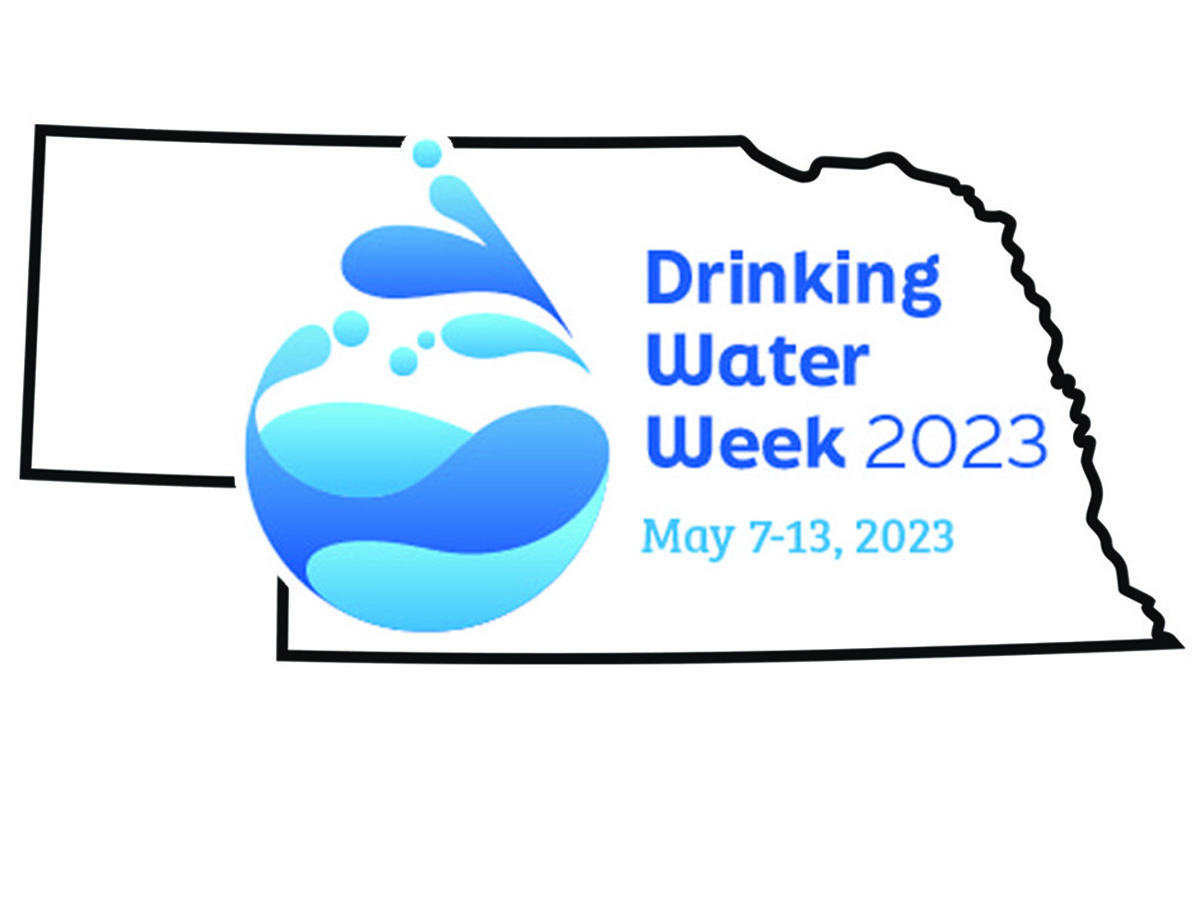
By Becky Schuerman, Extension Associate, Domestic Water/Wastewater Management
Water is life! In Nebraska, approximately 85% of people receive their drinking water from groundwater resources. This includes individual homeowners living in suburban and rural areas, as well as the majority of towns and cities across the state. Because of Nebraska’s relative wealth of groundwater resources, we often tend to overlook the vital role water plays in the everyday lives of Nebraskans and our state as a whole. The month of May provides a great opportunity to celebrate and learn more about Nebraska’s drinking water resources, as well as recognizing and thanking our water professionals who work tirelessly to provide us with water and protect the quality of our water resources.
National Drinking Water Week is held in May each year to bring attention to all things water. This includes water quality, quantity, services and infrastructure, as well as Nebraska’s important link between groundwater and people’s drinking water. This year, National Drinking Water week will be observed May 7–13. In commemorating the week, Nebraska Extension encourages everyone to seize the opportunity to learn more about their water resources in general and think about where your water comes from.
Here are some ideas to make your home more waterwise and help you learn more about your drinking water and Nebraska’s groundwater resources:
• If you have a point-of-use water treatment device, check to confirm you have replaced cartridges and maintained it following the manufacturer’s recommendations.
• Check for leaky faucets and toilets.
• Work to conserve water usage wherever and whenever you can.
• Spend some time familiarizing yourself with the wealth of information on the Nebraska Extension water website: https://water.unl.edu.
• Check with your local Natural Resources District (NRD) for information on their groundwater programs, projects and studies.
IF YOU HAVE YOUR OWN WELL
• Use the month of May as an annual time to test your water quality. At a minimum, test for nitrate and bacteria. The contaminant limit for nitrate is 10 mg/L and for bacteria, it is 0 (zero). If there are other known contaminants of concern in your area, it would be wise to test for those too. You can find out about contaminants of concern in your area through your local NRD, health department and/or nearby public water supply system. The Nebraska Public Health Environmental Laboratory can provide you with the proper test kit(s) or a list of accredited drinking water labs across the state. Go to https://dhhs.ne.gov/Pages/Public-Health-Lab.aspx for further details.
• Take time to walk around and inspect your wellhead and outdoor hydrants:
o Make sure your wellhead is not damaged.
o Check for and repair leaky faucets/hydrants.
o Make sure there aren’t trees or bushes growing near your wellhead.
o That potential contaminant sources are far away from your wellhead.
If you receive your water from a public water supply, review the Annual Water Quality/Consumer Confidence Report for information on water-quality test results and other water-related information for your public water supply. This report is made available sometime between March and July of every year by each of Nebraska’s 597 community water systems. Delivery methods are based on population size. Check with your municipality if you would like to receive a printed copy.
Water is life, which is why we need to respect and protect all of Nebraska’s water resources so they remain sustainable for people, agriculture, wildlife and the environment for many years to come.
*Some content in this article was contributed by former Extension Educator Meghan Sittler.